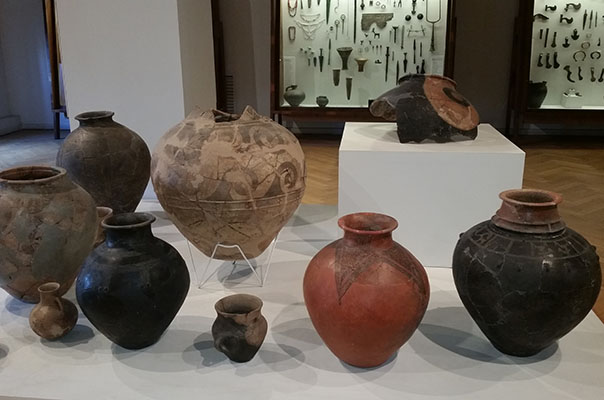Georgia is considered to be one of the oldest homelands of viticulture in the world. It is proved that wine-making in Georgia has been practiced since the 5th millennium BC. From 4000 BC Georgians were cultivating grapes and burying clay vessels, “kvevri”, in which to store their wine ready for serving at perfect ground temperature. Vine growing is one of the ancient branches of economic activities of people in Georgia. The presence of a large number of aboriginal sorts of grape (more than 500) also proves that Georgia is the cradle of initial inter-mutation of wild cultivated grapes.
For many centuries vine remains one of the fascinating symbols of Georgian history and culture. Famous sorts of Georgian wines are Rkatsiteli, Manavi, Napareuli, Tibaani, Tsinandali, Vazisubani, Mukuzani, Saperavi, Kindzmarauli, Khvanchkara, etc. The head of the Georgian table is Tamada, a person who proposes traditional toasts.
Georgian ancient traditional wine-making method using the Kvevri clay jars is included in the the UNESCO Intangible Cultural Heritage Lists.
Georgian cuisine is diverse and delicious; It consists of much ingredients and spices and offers variations of beef, lamb, pork, chicken, fish, cheese, eggplant, walnuts, hazelnuts, pomegranates, kidney beans, hot peppers, etc. Mtsvadi (barbeque), roast pig, chanakhi, khinkali, chakapuli, khachapuri, phkhali, satsivi, badrijani, churchkhela, “Matsoni”, the Georgian yogurt etc. are some of the many popular dishes in Georgia.



